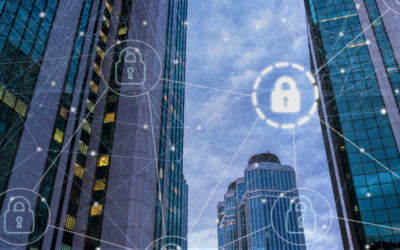The most recent quarterly threat report issued by Expel at the end of 2022, revealed some interesting trends in cyberattacks. It highlights how attack methodologies are constantly changing and is a reminder to never be complacent.
Security efforts require more than putting policies, systems and software in place. As detection and defense capabilities ramp up on one form of attack, cyber criminals divert to other attack paths and defence efforts need to adapt. When they don’t, it becomes all too easy for attackers to find and exploit vulnerabilities.
The Expel Threat Report indicates that attackers have shifted away from targeting endpoints with malware. Instead, they’re focusing on identities and using phishing emails and other methods to compromise employee credentials.
Currently, targeting identities accounts for 60% of attacks. Once attackers have a compromised identity, they use this to break into other company systems, such as payroll. With the ultimate goal of getting onto that payroll and extracting money from the company.
Being able to get onto company systems via a compromised email account is proving to be a very viable attack path. With a compromised identity, attackers will often sit and observe what access a user has into company systems and how they might exploit this. They’re patient and determined.
Can MFA help or do vulnerabilities remain?
One of the ways in which companies try to improve email security is to implement a multi-factor authentication (MFA) policy. This can be very effective in reducing the risk of attack. However, recent trends indicate that attackers are now leveraging MFA fatigue to gain access to emails and employee identities. They do this by relentlessly and repeatedly sending push notifications requesting authorisation, until a manager is so fatigued by this that they grant the request.
Once the attacker has access, they can easily navigate various company systems because their identity is seen to be valid and verified, having passed MFA. This can be discovered by monitoring for high volumes of push notifications. Some MFA providers have a way to report this and are working on solutions to address this type of attack. But in the meantime, employees need to be trained to be weary of multiple requests and rather report than assume it’s a system error and simply approve them. When an MFA bypass is discovered, the remedy is to shut that identity down and isolate that account and then investigate further what access may have been gained and what vulnerabilities exist as a result.
Does monitoring IP addresses help?
A past approach to monitoring for atypical authentication activity was to take into consideration what IP address the request originated from. It used to be a relatively easy security approach to flag and even block activity from IP addresses that originated from certain countries known for cybercriminal activity. It was a good approach in theory, but like MFA it’s become very easy to bypass using legitimate tools such as a VPN. A VPN will show a legitimate US based IP address which won’t get flagged as being one to watch. This highlights how conditional access such as the geolocation of an IP address isn’t enough.
There’s a whole underground of brokers eager to sell off compromised credentials and identities. Combined with a local IP address, it makes it easier for attackers to bypass basic alerts. This is why security remans a complex task that requires a multi-pronged defense approach.
What’s the minimum needed for better security?
Cybersecurity insurance guidelines are often used to identify what the minimum requirements are for security systems and policies. Currently this includes recommendations such as Endpoint Detection and Response (EDR) or Managed Detection and Response (MDR) combined with MFA policies, and regular employee security training. Ultimately the goal is for whatever tools and systems are in place, to be generating value for the company.
Being able to monitor systems, check activity logs, gain visibility into end points and check accessibility – ie – knowing what’s happening in terms of authentication is really valuable. For companies that have cloud based systems it’s important to be able to see cloud trails and activity surrounding new email accounts or API requests.
There is no one size fit’s all security solution and most companies will continue to make use of multiple security tools, products and services. They have to, because regardless of whether they operate in the cloud or with more traditional servers, attackers are continually adapting, looking for ways to get around whatever security a company has in place.
A new approach is to have a managed vulnerability service that can alert companies to changing attack paths being used gain authentication. This can help companies identify where they may be vulnerable and what they can do to beef up security in that area of business.
Ultimately, it’s about closing the window of opportunity for attackers and making it harder for them to access systems or get authentication. It requires agility and constant learning, keeping up to date with what could be seen as a vulnerability and exploited.
If you’d like to hear more on this topic, you can listen to a recent IT Trendsetters podcast: https://www.youtube.com/watch?v=1QXk_zcSfuc which discusses the different approaches to flagging atypical authentication requests and how to deal with them.


